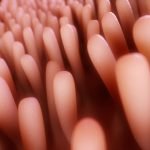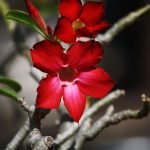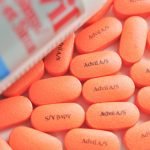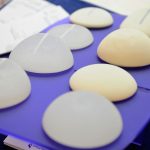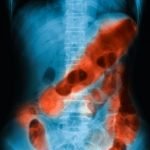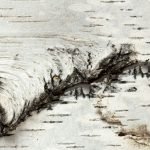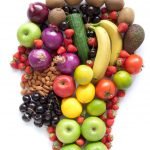Use It Or Lose It
The Therapeutic Power of Cold Water, Part 1
Sussanna Czeranko, ND, BBE
Modern hydrotherapy does not ask acceptance of its clinical results unless it can furnish a fairly clear rationale of the action of its procedures.
Dr Simon Baruch, 1898, p.29
Doubtless there are many thousands who through ignorance, neglect, and prejudice will not admit that simple cold water applied to the skin can affect such wondrous cures.
Dr Alfred Baumgarten, 1903, p.124
If the physician will tell you that your blood is poor, that you have bad blood, scrofulous blood, in short that you are predisposed to all diseases of the blood that are known, what is to be done?… The impurities must be driven out of the system; a new and healthy blood must be created.
Dr Alfred Baumgarten, 1903, p.124
Years ago, cold water applications constituted some of the chief therapeutic interventions in naturopathic treatment plans. The early literature of naturopathic therapies documents how cold water figured prominently in the treatment of life-threatening diseases in ways not commonly understood or practiced by naturopathic doctors today. Vincent Priessnitz and Father Kneipp mastered cold water as a therapeutic tool. Their legacy of medical narratives recounts their observations and treatments, guides us in exact indications, and describes miraculous healings. Those who followed their lead were unanimous that cold water had health properties like nothing else. These early naturopaths contended that cold water had many characteristics and benefits and they understood them well. They invariably chose cold water above hot water and, in some cases, even preferred it above herbal remedies and other modalities.
Despite this history, to win the attention of the modern naturopath on cold water as a powerful therapeutic tool is a challenge. We can, in any case, turn to the abundant material found in Kellogg, Baruch, Pope, Baumgarten, Hinsdale, Dieffenbach, Fox, Bilz, Shultz, Abbott, Le Quesne, Granville, and others to rediscover the enduring therapeutic value of cold water. Contemporary naturopathic doctors are confronted with primary care obligations punctuated with standards-of-care;to grasp the coherence, meaning, relevance and evidence which accompanies incorporating cold water back into their practices, our exploration of this historical literature requires extra diligence. While it is likely that one short article can hardly do justice for the mammoth works of these pioneers, we can make a start.
By gaining a better grasp of the significant utility of cold water, we can have an appreciation of its place within our contemporary practice, most especially in an era of massively distributed professional and OTC nutraceuticals, and in light of biomedicine sniffing at new markets whose therapies, philosophies, and protocols have been defended at great cost by naturopathic doctors for decades. Indeed, it is in this regard, protecting and claiming back our modalities and knowledge from the incursions of orthodox allopathic medicine, that the earlier, traditional values and knowledge of our forebears are more precious than ever. To the modern eye, cold water may not seem to be a likely or lucrative tool for important clinical and therapeutic work. However, understanding its nature and value in that work can restore it to our repertoires.
There are many dimensions and layers to that understanding. Indeed, what is cold water anyway? The answer involves many variables. Let us consider, in Part 1 of this discussion of cold water, the variables of temperature, primary action, secondary reaction, and heat production before turning, in Part 2, to the specific effects of cold water on perspiration, respiration, urine, blood, blood pressure, and heart, the nervous and digestive systems, and the muscles.
Temperature
With regard to temperature, for example, the cold temperatures used by the early naturopaths were very specific and entailed clearly-articulated procedures and planned outcomes. The literature shows that they knew how to use cold water in its most efficacious manner and wrote volumes about it. As a case in point, John Harvey Kellogg produced over 1100 pages on the topic of hydrotherapy using cold water. He left behind encyclopedic knowledge. According to Kellogg, cold has 3 various levels: very cold, cold, and cool. We might be tempted to insinuate “tepid” into this list, since, for many of us, any water temperature below hot seems cold (Table 1). His classification shows a differential of 48 ºF (or 27 ºC) between the very coldest water and the warmest cool water used in his sanitariums. At Kellogg’s sanitarium, the coldest water was at freezing point, 32 ºF / 0 ºC; 80 ºF / 27 ºC was considered the upper extreme of “cold water.” The range of tepid water was between 75 °F and 92 °F / 24 °C and 33 °C.
Contemporary patients (and naturopathic doctors too) would find these ranges chilly. I recall experiencing a “cold plunge” at Dr Kathy Roger’s clinic in Puget Sound a few years that caused me to jump out of my skin. I have taken many cold plunges in my time – some as cold at 45 °F / 7 °C – with perfect ease, yet the cold plunge at Dr Roger’s clinic was excruciating, even at 85 °F / 29 °C. However, as clinicians, we cannot assume that what is cold for one person is also cold for another. More often than not, previous exposure to cold water, and the ambience, preparation, and process of cold water treatments can affect our experience quite dramatically.
Table 1. Kellogg’s Levels of Cold
| Temperature | Degrees Farenheit | Degrees Centigrade |
| Very cold | 32 ºF to 55 ºF | 0 ºC to 13 ºC |
| Cold | 55 ºF to 65 ºF | 13 ºC to 18 ºC |
| Cool | 65 ºF to 80 ºF | 18 ºC to 27 ºC |
| Tepid | 80 ºF to 92 ºF | 27 ºC to 33 ºC |
(Kellogg, 1903, p.100)
Over a century ago, Curran Pope established similar water temperature classifications, except that he did not use water at freezing temperatures like Kellogg. Rather, he used slightly warmer temperatures for very cold water: 34 ºF to 55 ºF / 1 ºC to 13 ºC. (Pope, 1909, p.22) Indeed, should we find ourselves in water of 32 ºF or 34 ºF / 0 ºC or 1 ºC, we might not appreciate this 1 or 2 degree difference. Water at these temperatures is likely to be numbingly cold to most. George Knapp Abbott, another hydrotherapist of this period, had established similar temperatures just like his colleagues, but with slightly warmer temperatures for the category of cool water. Friedrich Eduard Bilz, a disciple of Sebastian Kneipp, used water temperatures ranging from 43 ºF to 88 ºF / 6 ºC to 31 ºC. Bilz divided the different classes of water between fresh spring water, from 43 ºF to 54 ºF / 6 ºC to 12 ºC, and cool water at 54 ºF to 65 ºF / 12 ºC to 18 ºC. He used tepid water temperatures ranging from 77 ºF to 88 ºF / 25 ºC to 31 ºC. (Bilz, 1898, p.1946) Bilz counseled that that “the hand is by no means a good test as to the temperature of water, and the uninitiated may make serious mistakes. It is far safer to be guided by a thermometer.” (Bilz, 1898, p.1946) (See Table 2 for comparisons of temperature classifications.)
Table 2. Temperature Classifications From Different Hydrotherapists
| Very Cold | Cold | Cool | Tepid | |
| F. E. Bilz (1898, p.1946) | 43-54 ºF /6-12 ºC | 55-65 ºF /12-18 ºC | 77-88 ºF /25-31 ºC
|
|
| J. H. Kellogg (1903, p.100) | 32-55 ºF /0-13 ºC | 55-65 ºF /13-18 ºC | 65-80 ºF /13-27 ºC | 80-92 ºF /27-33 ºC |
| C. Pope (1909, p.22) | 34-55 ºF /1-13 ºC | 55-65 ºF /13-18 ºC | 65-80 ºF /13-27 ºC | 80-92 ºF /27-33 ºC |
| G. H. Abbott (1914, p.38) | 32-55 ºF /0-13 ºC | 55-70 ºF /13-21 ºC | 70-80 ºF/21-27 ºC | 80-92 ºF /27-33 ºC |
| C. Schultz (1914, p.348) | 32-54 ºF | 55-70 ºF /13-21 ºC | 70-80 ºF /21-27 ºC | 80-92 ºF /27-33 ºC |
| R. M. Le Quesne, M. Granville (1946, p.23) | Below 65 ºF / below 18 ºC | 65-75 ºF /13-24 ºC | 75-92 ºF /24-33 ºC
|
|
Pope, Knapp, Kellogg, Bilz, Abbott, Schultz, Le Quesne, Granville, and others conducted much research in the 19th and early 20th centuries, attuned in their work to evaluating the properties of cold water on the body’s metabolism. There were studies comparing temperatures, duration, and delivery of the cold application, such as baths with compresses or douches, ablutions, jet douches, etc. Kellogg, for example, reminds us to pay attention to the variables of the water application. He states, “Whether or not the final effect of a cold application is sedative or excitant, depends much on the mode of application and the temperature employed, but most of all on the length of the application and the state of the patient.” (Kellogg, 1902, p.100)
Throughout any review of this literature, there are 2 terms to keep in mind when thinking about cold water: action and reaction.
The Primary Action
When we immerse ourselves into cool or cold waters, our bodies will perceive coldness, and “the first effect is a lessening of activity.” (Kellogg, 1902, p.100) If the water temperature is lower than body temperature, the peripheral blood vessels will set in motion a chain of reactions. The first action is seen at the surface of the skin: the superficial blood vessels contract, and blanching or whitening of the skin occurs. Contracted blood vessels cause a decreased blood flow which diminishes heat loss. The cold essentially causes the capillaries to spasm, “forcing the blood to the interior.” (Baumgarten, 1903, p.124) As Baruch described, “local stimulant effect upon the vessels of the skin is promptly followed by a rapid reactionary dilation is as familiar as the alphabet.” (Baruch, 1898, p.11)
If the temperature of the cold water is really cold, the skin may develop goose bumps that will be accompanied by feelings of chilliness, teeth chattering, and the body shivering. Depending upon how the cold water comes in contact with the person, a huge breath may accompany the cold water exposure. With cold exposure, there is a suspension of perspiration that will occur almost immediately.
The Secondary Reaction
The body’s reaction to cold was what made Priessnitz and Kneipp’s healing powers legendary. Their ability to observe and decisively determine a treatment plan instantaneously was the anchor of their healing gifts. Upon delivering a simple knee gush or an ablution, these healers could make an accurate diagnosis and a treatment plan by watching the secondary reaction. The superficial blood vessels immediately constrict, lasting several seconds to thwart the loss of heat. Baumgarten explains, “Now after these 70 to 80 seconds have passed, these small capillary blood vessels which before had contracted, again expand and the blood rushes to the surface.” (Baumgarten, 1903, p.124) What Priessnitz and Kneipp were observing was a return of color to the skin. Baumgarten remarks on this essential point, “When the blood flows to the interior, you will notice that skin turns a deathly pale, but if the flow of water continues, the skin will soon turn red again. For the one who applies the water knows that he must let water flow until the skin has regained this tint.” (Baumgarten, 1903, p.124)
Kellogg also acknowledged the significance and importance of reactions. As long ago as the turn of the last century, he wrote, “Reaction, using the term as it is employed in hydrotherapy, is one of the most complex and interesting of physiological phenomena.” (Kellogg, 1902, p.129) Kellogg is referring to the thermal and circulatory actions and reactions of cold applications on the body (see Table 3). “The thermic reaction to cold may be defined as the effort of the body to replace the heat which has been lost by exposure to cold, and to restore the equilibrium of the body temperature.” (Kellogg, 1902, p.135) The temperature reflex centers in the brain stimulate heat production. Blood circulation speeds up, causing more heat loss and the feeling of warmth. The constriction is then replaced by relaxation of these same blood vessels. “The first chilliness is succeeded by a sensation of warmth.” (Fox, 1913, p.52)
Table 3. Actions and Reactions of Cold Applications on the Body
| Action | Reaction | |
| 1 | Contraction of the small blood vessels of the skin, with dilation of internal vessels after a very brief contraction | Dilation of the small blood vessels of the surface, with contraction of internal vessels |
| 2 | Pallor of skin | Redness of the skin |
| 3 | Goose-flesh appearance and roughness of skin | Skin soft, smooth and supple |
| 4 | Sensation of chilliness | Sensation of warmth |
| 5 | Trembling, shivering, chattering of the teeth, in some cases decidedly painful and distressing sensations of constrictions, etc | A sensation of comfort and well-being |
| 6 | First quickening, then slowing of the pulse, with increase of tension | Slowing of the pulse, with increased tension |
| 7 | First checked, then quick, deep, gasping respiration | Respiration free, slower, and deeper |
| 8 | Cooling of the skin | Heating of the skin |
| 9 | In most cases a slight rise of internal temperature | Fall of internal temperature |
| 10 | Perspiration checked | Increase of perspiration |
(Kellogg, 1902, p.131)
Dieffenbach describes the “exhilaration” of cold water applications enthusiastically. He writes, “The sensation of refreshing vigor imparted by a short, cold douche or plunge, due to the glow or reaction, carries with it suggestion of improvement rarely equaled by any other measure, excepting possibly the stimulating effects produced by conservative air baths.” (Dieffenbach, 1909, p.23)
Naturopathic researchers of this period differentiated their work among these many variables in therapeutic cold water use. In addition to considerations of primary action and secondary reaction, they studied the generation of heat, as well as the effects of cold water on perspiration, respiration, urine, and blood.
Heat Production
The effect of short cold baths on metabolism is interesting. By viewing the cold bath through John Kellogg’s lens of many years, we can see that the initial and immediate responses to cold are the sensations of goose bumps and chilliness. However, the body has a secondary reaction to the cold exposure that is in complete contrast – one of warmth. A brief cold bath for 150 seconds had shown that the body lost 44 calories in the first minute of immersion, and less than half of this amount in the following minute. One early naturopathic researcher, Fortescue Fox, states, “Meanwhile, the heat production during the bath rose to 14 times the normal.” (Fox, 1913, p.54) Fox’s comments regarding heat loss and heat production are striking. More heat is produced than lost.
Another hydrotherapist, Guy Hinsdale, found that “cool baths are better in the infectious fevers, [especially] the brilliant results obtained by the Brand treatment of typhoid fever.” (Hinsdale, 1910, p.34-35) Fox explains further, “Ernst Brand of Stettin in 1861 advocated the use of cooling baths in typhoid fever. It should be particularly noted that Brand followed the practice of Giannini and avoided cold baths in fevers.” (Fox, 1913, p.62) Simon Baruch, a medical doctor of the late 19th and early 20th centuries, condoned the Brand bath and Hinsdale’s use of cool water baths as very effective ways of reducing fever. In fact, Dr Simon Baruch wrote 3 impressive books on the subject of hydrotherapy. Schultz cites Baruch who had explained, “This fallacious idea that cold baths, for instance, reduce temperature by the direct effect of the cold is still so firmly fixed in the minds of many otherwise well informed men, that it is regarded as axiomatic. This is one cause of the misinterpretation of the rationale of the cold bath in fevers, which has been a serious obstacle to the popularization of this life-saving measure.” (Schultz, 1914, p.534) While our logic tells us that cold water will cool us down, the body’s reaction to cold applications is to generate internal heat.
Creating heat within the body is also accomplished by normal body reactions to cold, such as shivering and trembling. Hinsdale states, “Shivering and active movements in connection with cold baths are thus natural aids in the regulation against cold; they produce heat, favoring and calling forth chemic regulation, and usually fully compensate, or may over compensate the heat loss.” (Hinsdale, 1910, p.39) Once the blood returns to the superficial circulation and the reaction occurs, the shivering ceases and the feeling of warmth is felt.
Invitation to Participate in a Survey
In Part 2 of this article, we will review the remarkable research done by the early naturopaths and hydrotherapists on the effects of cold water on a number of health focuses of concern to our forebears, such as urine, perspiration, respiration, blood, blood pressure and heart, the nervous and digestive systems, and the muscles. In preparation for that segment, I would like to invite you to participate in a small survey, outlined here…
Cold Water Survey
At a most elemental level, for example, let us consider our awareness of temperature in the available water source in our clinics. When we turn on our cold water tap in our clinics, and run our hands and fingers under the water, is the water uniformly cold? Is the water that Dr Letitia Dick-Kronenberg feels in her Spokane clinic the same temperature that Dr Doni Wilson practicing in New York City feels when she turns on her cold water tap? Let us explore and document some comparative temperatures across the land. The early naturopaths had much to say about cold and warm and hot water sourcing.
If you would like to participate in a simple temperature survey, please take a few moments to gather some data:
Turn on your cold water tap in your clinic and let the water run for about 2 minutes. Then use a thermometer and record the temperature. Please send me [[email protected]] your name [optional], your city or location, province or state, and the temperature of the water. If you practice in rural areas, please make note of this. I will utilize these temperatures in an upcoming NDNR article related to hydrotherapy. The goal is to see whether there are differences in what contemporary naturopathic doctors consider to be cold water. I do not ask this question to argue personal preferences but to understand the temperature differentials regarding cold water as a therapeutic agent.
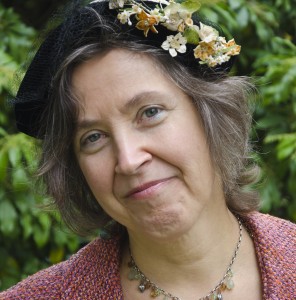 Sussanna Czeranko ND, BBE, incorporates “nature-cure” approaches to primary care by including balneotherapy, breathing therapy, and nutrition into her naturopathic practice. Dr Czeranko is a faculty member working as the Rare Books curator at NCNM and is currently compiling a 12-volume series based upon the journals published early in the last century by Benedict Lust. Four of the books have been published: Origins of Naturopathic Medicine, Philosophy of Naturopathic Medicine, Dietetics of Naturopathic Medicine, and Principles of Naturopathic Medicine. In addition to her work in balneotherapy, she is the founder of the Breathing Academy, a training institute for naturopaths to incorporate a scientific model of breathing therapy called Buteyko into their practice. She is a founding board member of the International Congress of Naturopathic Medicine and a member of the International Society of Medical Hydrology.
Sussanna Czeranko ND, BBE, incorporates “nature-cure” approaches to primary care by including balneotherapy, breathing therapy, and nutrition into her naturopathic practice. Dr Czeranko is a faculty member working as the Rare Books curator at NCNM and is currently compiling a 12-volume series based upon the journals published early in the last century by Benedict Lust. Four of the books have been published: Origins of Naturopathic Medicine, Philosophy of Naturopathic Medicine, Dietetics of Naturopathic Medicine, and Principles of Naturopathic Medicine. In addition to her work in balneotherapy, she is the founder of the Breathing Academy, a training institute for naturopaths to incorporate a scientific model of breathing therapy called Buteyko into their practice. She is a founding board member of the International Congress of Naturopathic Medicine and a member of the International Society of Medical Hydrology.
REFERENCES
Baruch, S. (1898). The Principles and Practice of Hydrotherapy. New York, NY: William Wood and Co..
Baumgarten, A. (1903). Water applications. The Naturopath and Herald of Health, IV(5), 124-126.
Bilz, F. E. (1898). The Natural Method of Healing. Leipzig, Germany: F. E. Bilz Publishing.
Fox, R. F. (1913). The Principles and Practice of Medical Hydrology. London, England: University of London Press.
Hinsdale, G. (1910). Hydrotherapy. Philadelphia, PA: W. B. Saunders Company.
Kellogg, J. H. (1902). Rational Hydrotherapy, 2nd edition. Philadelphia, PA: F. A. Davis Company Publishers.
Pope, C. (1909). Practical Hydrothrapy. Cincinnati, OH: Cincinnati Medical Book Company.
Schultz, C. (1914). Hydrotherapy or water cure. The Naturopath and Herald of Health, XIX(7), 419-422.
Schultz, C. (1914). Hydrotherapy or water cure. The Naturopath and Herald of Health, XIX(8), 533-536.



